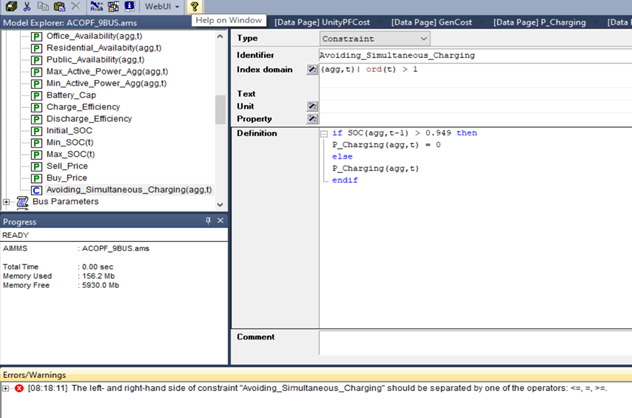Good morning all,
Please, can someone tell me why I keep getting this error ![]() ? Both SOC(agg,t) and P_Charging(agg,t) are variables.
? Both SOC(agg,t) and P_Charging(agg,t) are variables.
Thanks so much.

 +3
+3Good morning all,
Please, can someone tell me why I keep getting this error ![]() ? Both SOC(agg,t) and P_Charging(agg,t) are variables.
? Both SOC(agg,t) and P_Charging(agg,t) are variables.
Thanks so much.

Best answer by mohansx
The problem is with your “else” block. This is a constraint and not a variable definition, so
else
P_Charging(agg, t)
endif
does not make any sense. You can simply have
IF SOC(agg, t-1) > 0.949 THEN
P_Charging(agg, t) = 0
ENDIF
Already have an account? Login
Please use your business or academic e-mail address to register
No account yet? Create an account
Enter your E-mail address. We'll send you an e-mail with instructions to reset your password.
Didn't find what you were looking for? Try searching on our documentation pages: